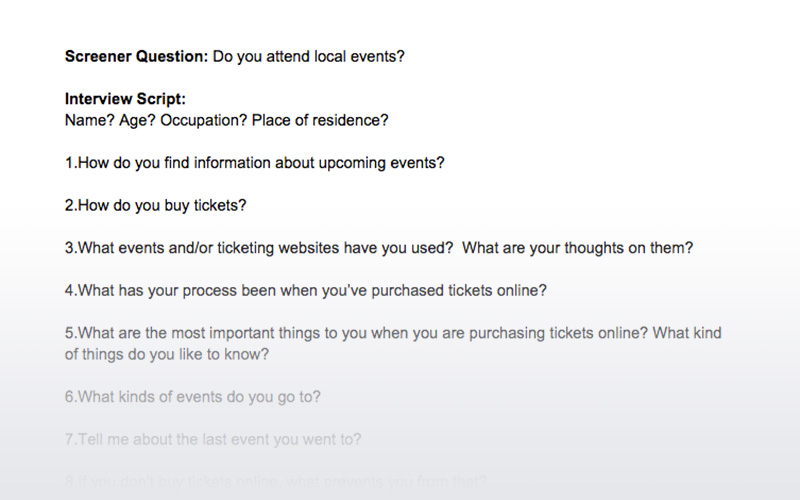The Challenge
Imagine Fandango would like to increase user engagement by expanding their focus on cinema to helping people easily discover music, the arts, sports and other local events and enable them to purchase tickets to these events in one location. Fandango has a large market already using their app for movies. In order to ensure adoption by existing users, market growth, and overall success, careful consideration must be paid to the methods of implementation.
The Discovery
User research revealed three major areas of importance when people were event finding and ticket purchasing. The first is that people trust event recommendations from friends over any other source. The second is that people are less likely to purchase tickets from vendors that charge high fees. The third revealed that people prefer e-ticketing over physical tickets. The new Fandango app would need to accommodate these user needs in order to ensure success.
The Outcome
The solution was integrating new functionality into Fandango’s existing iOS native app that allows users to discover and book events in one location. It issues e-tickets, gives suggestions for events that are tailored to their interests, and facilitates interactions with users and their friends. The app collects information from social media networks to inform event suggestion generation, allow event sharing, and provide person-to-person communication.
Research
My team began with an open discussion of our personal work styles, goals, and expectations for this project.
After getting a better understanding of one another and making sure we were all on the same page, we developed a project plan, timeline, and project summary. Next, we researched the domain and Fandango and gathered information about what was already out there.
We then screened to focus our target group, wrote a script, and conducted interviews to reveal information about how people found events, purchased tickets, their perceptions of the processes, and any other relevant information.
Plan
Based on patterns and trends discovered in our user interview analysis and affinity diagraming, we were able to synthesize a persona based on our qualitative data. Pat served as a guiding star and kept us focused on our intended direction throughout the design process.
By exploring specific scenarios and Pat’s journey, we were able to get a more detailed understanding of how a user would interact with our app. We used that clarity to sketch diagrams, user flows, and sitemaps to lay the foundation of our structure.
After solidifying our architecture, we started layout and wireframe sketches and then moved into Axure.
Testing
The team and I began user testing while the prototype was low-fidelity, which made iteration much less difficult to implement than if the design had been further eveolved.
One piece of feedback we received from users, was that the process of selecting the number of tickets felt disjointed. We responded by eliminating a separate page for it and instead using a select menu, keeping the user in context.
Once our user-informed changes were addressed, we began increasing the fidelity.
Design
The final product is a clickable prototype built in Axure that reflects the core needs of users.
The Fandango Events app design uses e-ticketing to reduce extra fees associated with mailing physical tickets, and eliminates the need to stand in a will-call line at the venue. In addition, we provided connectivity to friend networks, to inform event suggestions and facilitate interactions with friends.
In moving forward, I would build this prototype out further and conduct more usability tests. I would like to collect more information on whether users trust the generated event recommendations enough to find them useful and if not, how it could be improved. If this new functionality was well received by iOS users, it would be expanded to all platforms.












